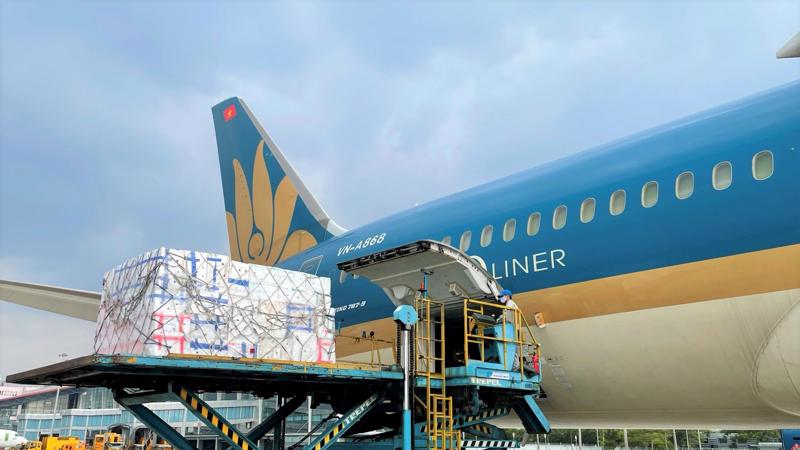Vietnam Airlines is planning to establish an airline specializing in cargo transport in the context of its business operations being severely impacted by the Covid-19 pandemic, the national flag carrier’s Annual Shareholders Meeting on July 14 heard.
It has already converted seven passenger aircraft into cargo aircraft, including five wide-body A350 and two narrow-body A321 aircraft. Revenue from cargo transport, which normally accounts for 10 per cent of the total, exceeded that of passenger transport in June. “This is the basis for Vietnam Airlines considering setting up a cargo airline post-pandemic,” Mr. Dang Ngoc Hoa, Chairman of the Board of Directors of Vietnam Airlines, told the meeting.
According to Mr. Le Hong Ha, Vietnam Airlines’ General Director, it has mulled establishing a cargo unit for a long period of time. “However, the situation over the last five years showed that cargo airlines need to ensure scale to exploit all sources of cargo, with carriers like Korean Air and China Airlines also having a route network and a large fleet of cargo aircraft,” he added. “We have previously believed that setting up a cargo airline was not appropriate.”
The cargo segment has proven its efficiency since Covid-19 broke out. According to a report the Ministry of Transport sent recently to the government, the proportion of revenue from cargo transport at airlines in Vietnam has increased three-fold over the last year compared to the period prior to the pandemic.
Since early this year, the worsening Covid-19 situation, especially during the peak seasons of the Tet (Lunar New Year) holiday and the national holiday on April 30 and May 1, has continued to put pressure on Vietnam Airlines. It would normally conduct 500-550 flights a day during these peaks, but this year conducted only 40, primarily carrying goods for provinces with quarantine sites and to maintain trade around the country.
It is estimated that Vietnam Airlines incurred a loss of VND9.82 trillion ($426.7 million) in the first half of this year.
With the market exhibiting few signs of recovery, the carrier’s revenue and profit targets for this year are lower than last year. It has forecast consolidated losses rising to VND14.5 trillion ($626.8 million), a 30 per cent increase.
Its future plans are based on the assumption that it will complete the sale of eleven A321 aircraft, that the government allows the opening of flights to Phu Quoc Island in the Mekong Delta province of Kien Giang, that vaccine passports will be applied, and that the carrier completes the disbursement of a support package of VND12 trillion ($521.7 million) and other government support.
It signed a credit contract last week of VND4 trillion ($173 million) with SeABank, SHB, and MSB, with the source of the refinancing fund provided by the State Bank of Vietnam (SBV).At the meeting, the airline also announced a plan to issue shares to existing stakeholders in the third quarter, to raise VND8 trillion ($347.6 million). Mr. Hoa said the proceeds will be used to pay overdue debts and cover operational costs.









 Google translate
Google translate